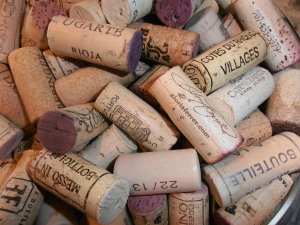 Some wine makers feel very passionately about how to find closure for their wines. Yes, I am referring to the old screw cap vs. cork debate. And many well-respected wine experts are taking very different sides of the conversation.
Some wine makers feel very passionately about how to find closure for their wines. Yes, I am referring to the old screw cap vs. cork debate. And many well-respected wine experts are taking very different sides of the conversation.
Over the past decade or so, screw caps have been losing their once bad-boy reputation. Formerly thought of as cheap, fast and classless, screw caps are more readily accepted as a legitimate wine bottle closure, even for high-quality wines. As a matter of fact, they may have some advantages over the traditional cork.
The biggest appeal of screw caps, and one of the reasons that whole countries (i.e. Australia) have been moving toward them, is that a wine with a screw cap is much less likely to be affected by TCA, trichloroanisole, cork taint. TCA develops from a mold that can be found on cork. The mold combines with trace amounts of chlorine from bleach used on winery equipment or on the corks themselves, and trichloroanisole is formed. It is easily recognizable in the wine as a dank, wet newspaper smell, and while not dangerous to ingest, completely overpowers the natural aromas and flavors of the wine, leaving a distasteful liquid that pairs with nothing worth eating. It ruins the wine and can’t be remedied. However, TCA is not just found in wines with corks. It can be formed on the winery equipment and seep into the wine that way. So, a screw cap is no guarantee against it. Further, there are other flaws a wine can develop other than TCA including several bacterial flaws as well as some sulfur flaws. So, even if screw caps could wipe out the problem of cork taint, which they cannot, there are still plenty of other flaws that can develop regardless of the closure.
Two things a cork closure will do to enhance the wine are, they allow some minimal oxidation, which helps a young wine mature, and they contribute some tannins to the wine. Cork is a wood product, after all. Tannins and minor oxidation during aging is a benefit for a full-bodied, red, but a delicate white wine would not benefit from either. A screw cap creates a closure impervious to oxidation, with no contribution of tannins.
Things are no more clear cut on the environmental front. At first glance one might think the natural, biodegradable cork is much more environmentally friendly. Cork itself is renewable and sustainable as the cork is harvested without harming the tree. However, cork comes from trees grown in Portugal and Spain. The corks have to be shipped to new world wineries, and that creates a carbon footprint. Screw caps, on the other hand, can be manufactured locally from recycled aluminum. And they can be recycled again after use.
Perhaps the right answer is that different closures are right for different wines. We, as consumers, need to be let go of our long-held beliefs that a screw-capped wine is a cheap wine, as well as our futile hopes that getting rid of the cork will get rid of the cork taint. Closure, like other wine-making choices, should be left to the wine maker. As yet, there is no clear closure for the debate on closure.